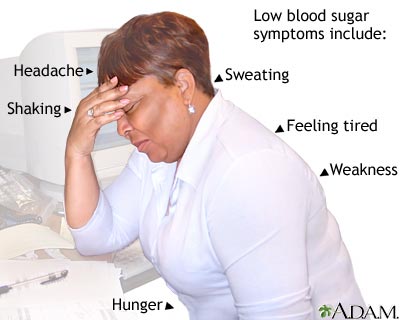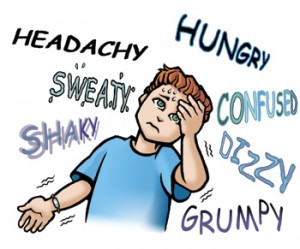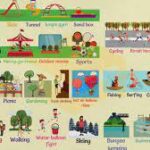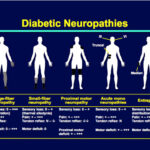Hypoglycemia or low sugar is one of the nightmares of the patients and the doctors alike. High and low sugars may both present with sweating , confusion and sometimes even unconsciousness.
The commonest causes being taking too much of insulin or some medicines or forgetting to take food, too intense an exercise, consuming alcohol and some tumors of the pancreas.
Symptoms
Generally sweating, shaking of the hands, irritation, craving for food, beating fast of the heart, headache, stomach pain (gastritis) and clouding of consciousness. The body tries to correct the levels itself by an in built mechanism.
For the elderly adults low sugar manifests as confusion, delirium and drowsiness. Tremors and sweating are rare for the elderly with low sugar levels.These can mimic those with a fit or stroke and is, for that strange reason, often misdiagnosed.
For some people the body fails to recognize the features of low sugar. This is dangerous as very low levels are needed for the body to recognize it thereafter. This is called unawareness.
What can be done?
If low sugar happens, drink a can of orange juice or chew on some dry raisins or put some sugar into your mouth. If glucose tablets are available, that is a good option. Chocolates are not a good solution for low sugars as the fat content in chocolates delay the fast rise in sugar. Check your sugar level after 15 minutes and if still low, repeat the above. Get to nearest hospital and get this corrected if needed.
Categories of hypoglycemia:
• Documented hypoglycemia: typical symptoms of hypoglycemia and when the plasma glucose is ≤70 mg%.
• Severe hypoglycemia : An event which requires active assistance of a person to administer glucagon or carbohydrate or adopt any other resuscitative measure.
• Asymptomatic hypoglycemia: An event that is not accompanied by typical symptoms but the plasma glucose ≤70 mg%.
• Probable symptomatic: An event during which hypoglycemic symptoms are not documented with a plasma glucose determination, but presumed to be ≤70 mg%.
• Relative hypoglycemia: An event during which the diabetic patient reports typical symptoms of hypoglycemia, and interprets those as indicative of hypoglycemia, but the plasma glucose is ≥ 70mg%.
While driving if low sugar is encountered, drive off the road, put on distress signals, turn off the car, pull down the windows, remove the key from the ignition, take some sugar or orange juice immediately.( you must have a stock of this in the car always) . The brain takes some time to recover from the low sugar and impulsive driving may be initiated leading to accidents. Always check sugar levels before a long drive, break the journey in between long drives and carry an ID mentioning your diabetic status and contact numbers.
Sometimes hospitalization is also needed in serious cases.
The impact low sugars can have on life is very dramatic. For example, developing this while attending an interview or while at the exams or at an important meeting or while driving, can change the course of ones` life. People may then become introverts avoiding social functions for fear of low sugar. They are often mistaken for drunken behavior as well.















